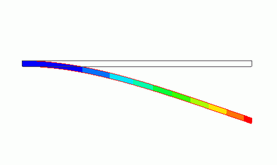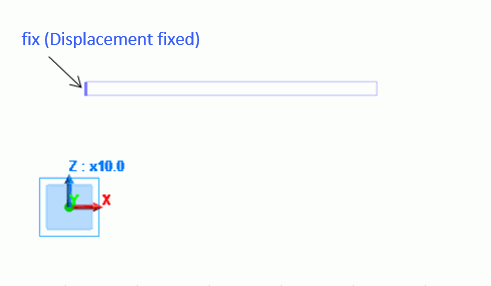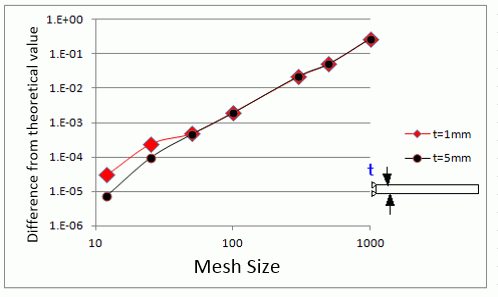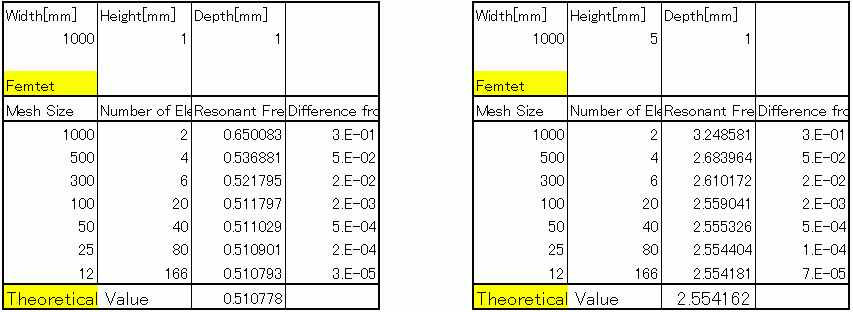
CAE Software【Femtet】Murata Software Co., Ltd.

Example20 Resonant Frequency of Cantilever

General
-
The measured resonant frequency and the theoretical value of cantilever will be compared.
-
The material is not piezoelectric.
Analysis Conditions
|
Item |
Setting |
|
Solver |
Piezoelectric Analysis [Rayleigh] |
|
Analysis Space |
2D |
|
Analysis Type |
Resonant Analysis |
|
Unit |
mm |
|
Analysis Plane |
2D section |
|
Variables to Constrain |
Select “Voltage” and “Y displacement” Deselect “X displacement” and “Z displacement”
|
|
Options |
Deselected |
Graphical Objects
Left end is fixed.

Body Attributes and Materials
|
Body Number/Type |
Body Attribute Name |
Material Name |
|
0/Solid |
Body_Attribute_001 |
Material_Property_001 |
|
Material Name |
Tab |
|
|
Material_Property_001 |
Piezoelectricity |
Piezoelectricity: No Anisotropy: Isotropic Young’s modulus: 1×10^10[Pa] Poisson’s ratio: 0.0 |
|
Body Attribute Name |
Tab |
|
|
Body_Attribute_001 |
Thickness/Width |
Thickness of sheet body: 1.0[mm] |
Boundary Condition
|
Boundary Condition Name/Topology |
Tab |
Boundary Condition Type |
Setting |
|
fix/Face |
Mechanical |
Displacement |
Select all UX, UY, and UZ. UX=0, UY=0, UZ=0 |
Results
The resonant frequency calculated by Femtet is compared to the theoretical value of cantilever.


The difference between the measured and the theoretical values is given in the following equation.
Difference = (Resonant frequency/Theoretical value of cantilever) – 1.0
The theoretical value is given in the following equation.

f0: Resonant frequency[Hz]
E: Young’s modulus[Pa]
I: Second moment of section (=(depth x (height^3))/12)[m4]
ρ: Density[kg/m3]
A: Section area[m2]
l:: Length[m]
λ=1.8751

